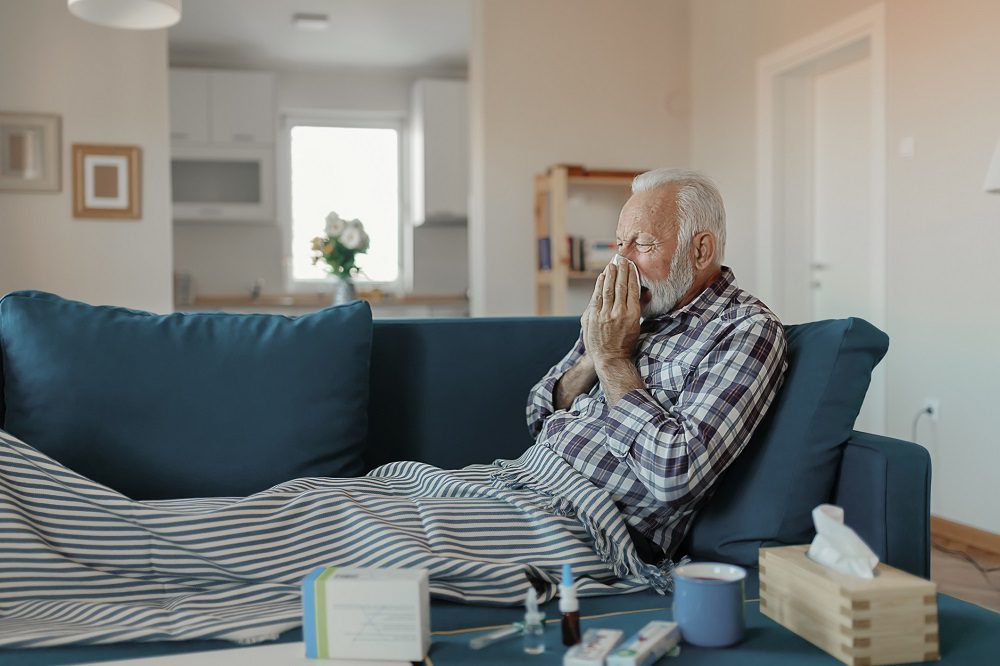With all the attention on COVID and influenza, it’s easy to forget that pneumonia is a serious health threat. An infection that attacks the air sacs in the lungs, it is the most common flu complication. “Walking pneumonia,” now called community-acquired pneumonia, is acquired outside a hospital and can be caused by multiple bacteria and viruses. Hospital-acquired pneumonia usually refers to pneumonia with resistant bacteria that develops in people on respirators who have been on antibiotics. Pneumonia often can be managed at home, but without prompt care, it can become serious quickly.
Symptoms: What distinguishes pneumonia from a bad cold or flu is that the cough produces sputum and you have chest pain and difficulty breathing. You might experience fatigue, nausea and/or vomiting, diarrhea and, in people over age 65, mental confusion and a lower-than-normal temperature.
Diagnosis: Your doctor will take a health history and do a physical exam. You might need a chest X-ray, a blood test and/or sputum test to identify whether it is from a virus or bacteria.
Treatment: In addition to pain relievers and drinking fluids, you may need antibiotics if the cause is bacteria…or an antiviral if the cause is a virus.
Prevention: If you’re 65 or older…or between 19 and 64 with underlying conditions…or are immunocompromised…you should get the pneumococcal vaccine, which targets different strains of the bacteria Pneumococcus. There are two types of Pneumococcal vaccine—Pneumococcal conjugate vaccines (PCV13, PCV15 and PCV20)…and Pneumococcal polysaccharide vaccine (PPSV23). Your doctor will know which is best for you. The vaccines are effective, but still take precautions to avoid infection even after vaccination.
PNEUMONIA AND COVID
Pneumonia can develop in lungs under siege from COVID. The most important way to avoid both is to be vaccinated and boosted against COVID. If you are diagnosed with COVID and are over 65 or have underlying conditions, treatment with Paxlovid can help prevent pneumonia. Paxlovid does increase the risk for rebound COVID, but it’s a better scenario than being on a ventilator.


